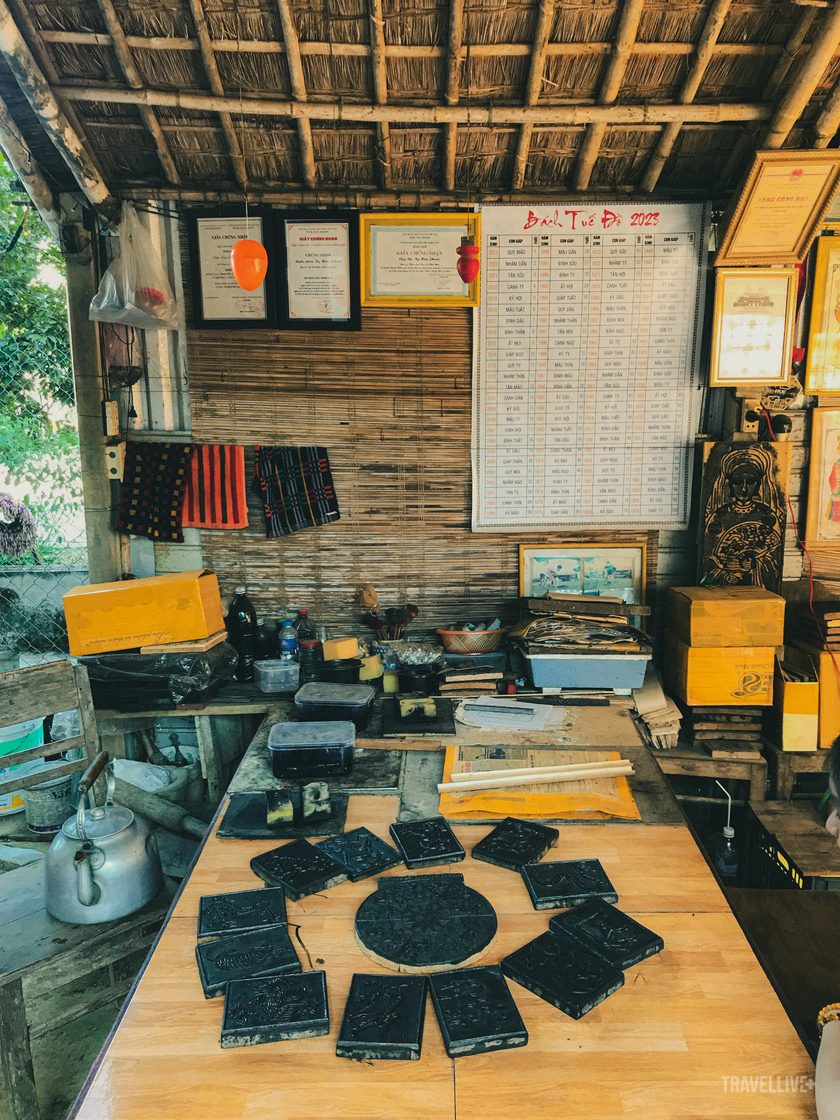Visit Dia Linh village, see with your own eyes the craft of making Tao statues
My mother called to ask when I would be home for Tet, whether I would be in time to see the Kitchen Gods off to heaven. I had been studying away from home since I was 16, and a little further when I was 18, and now I work more than 800km away from home, close enough to always be home for Tet and far enough to look forward to each day. Luckily, my job is quite flexible, so I usually go home early, before or on the 23rd of December, to prepare a simple offering with my mother to the kitchen gods of my house, the three Kitchen Gods.

Apple mold drying in the sun
During my trips to Hue, I always spend a lot of time to immerse myself in the slow pace of life here by learning and interacting with the local people. This time, I visited Dia Linh village because I learned that this is the only place in Hue that still makes statues of Tao Quan, serving the people's need to replace the statues once a year on the 23rd of December.
From the first moment I entered the village, passing through the winding roads, I saw the image of people working hard at the kiln. The pace of life was bustling but still peaceful. In the yard, people took out their newly molded Tao statues to dry, the smell of clay still lingered, very pleasant.

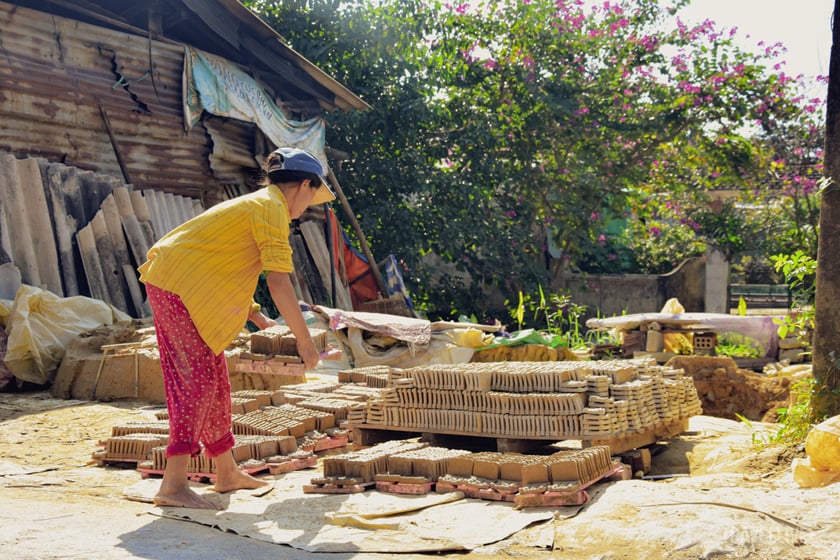
The craftsmen are meticulous and spend a lot of effort to make the statues of Tao.
Currently, Dia Linh village has only 5 furnaces making Tao statues, of which 4 are brothers in the same family. I stopped by Ms. Hang’s house to see the process of making Tao statues and had the opportunity to chat with her to understand more about the craft village and this job.
Ms. Hang, about 30 years old, has spent many years making Tao statues. She shared: “It looks simple, but making Tao statues requires meticulousness and carefulness in every step. The selling price is not high, only 5,000 VND/statue, so now few people follow the profession. I just do as much as I can, doing it over and over again becomes a habit, if I don't do it, I might miss it.”
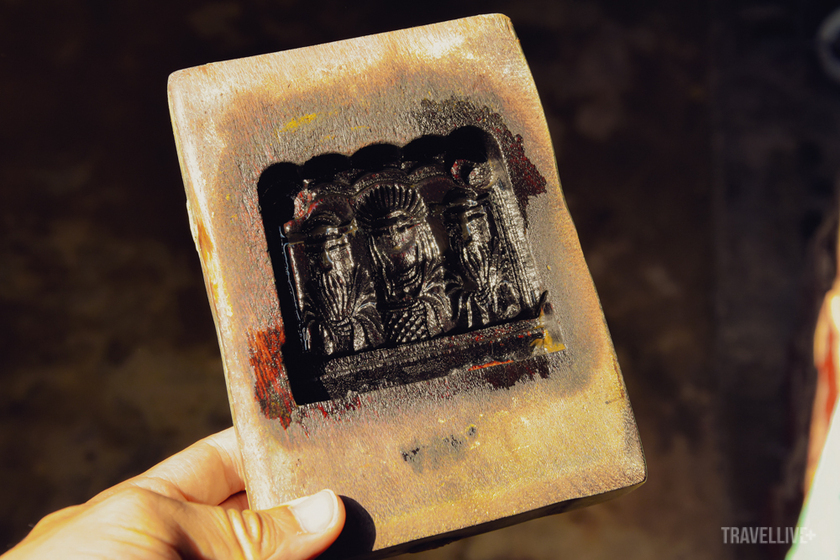
Close-up of the Apple statue
During the last days of the year, the Tao statue makers in Dia Linh work tirelessly to ensure there are products to serve customers. On average, each family produces about 60,000 Tao statues a year and the hustle and bustle starts from the ninth lunar month. A complete Tao statue consists of two Tao men and one Tao woman standing next to each other.
To make a statue of Tao, the artisan must go through an elaborate process of selecting soil and kneading. The soil for the statue must be yellow clay, carefully selected, with few impurities. The mold is made from ironwood. After kneading the soil, the craftsman puts the yellow clay into the mold and presses it tightly so that the statue does not deform. After removing the statue from the mold, it is left to dry in the sun before being put into the kiln.



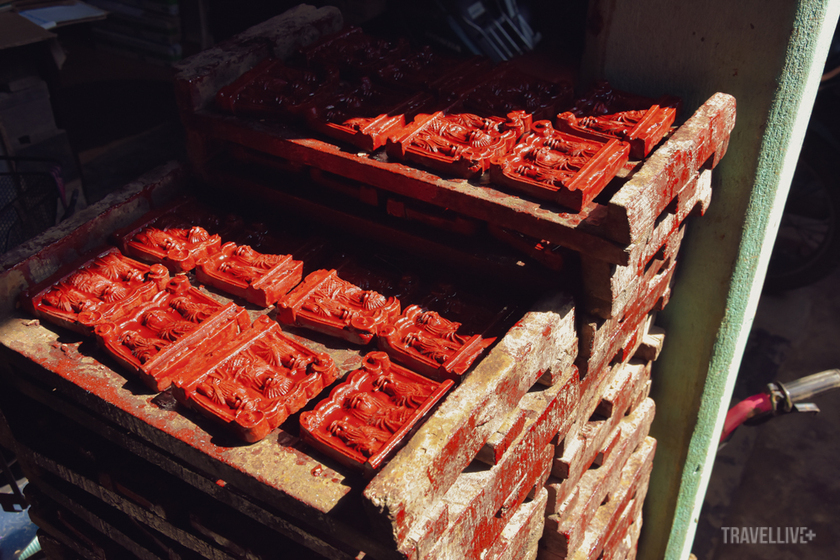
The Apple statue when colored
Folk colors in Sinh painting village
In addition to the profession of making Tao statues, the scent of Tet is also strong in Sinh village, which is famous for its paintings serving folk religious activities. Sinh paintings are made of Do paper, a type of paper that is tough, thin, soft, and easy to absorb color. The paintings are printed in many different sizes: 25cmx70cm, 25cmx35cm, 25cmx23cm, 25cmx17cm.
Sinh village also tends to shrink, with only about 6-10 families with more than 30 professional workers producing paintings and still preserving traditional woodblocks. From the 10th lunar month, when the ancient capital is bustling with preparations for Tet, the painting profession also attracts 15-17 families with nearly 100 semi-professional workers.
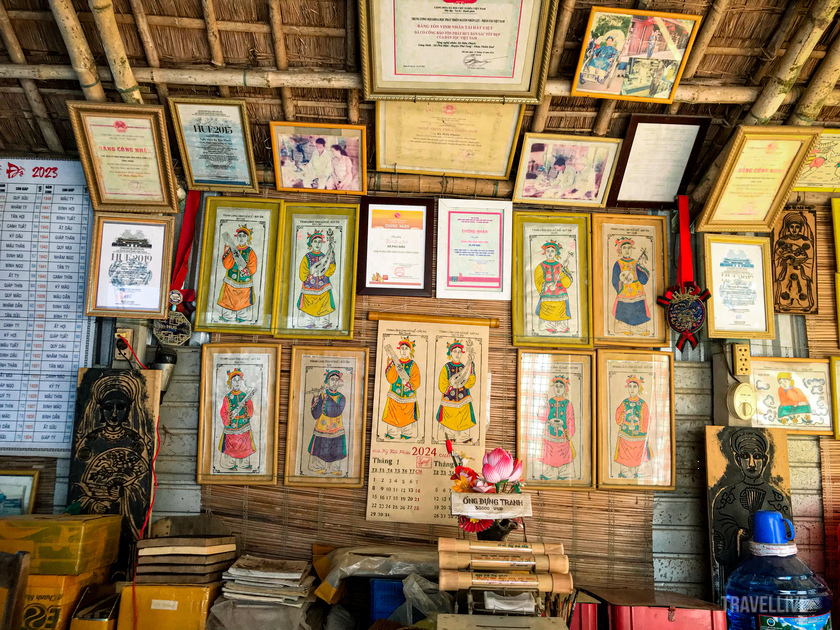

Painting corner at Mr. Ky Huu Phuoc's house
I visited the house of artisan Ky Huu Phuoc, who is over 70 years old, grew up in Sinh village and has been involved in the craft since he was 12 years old. In the past, he was called Cong by the village elders, the name Cong is to talk about his merit, because he was the one who preserved the woodblocks during the previous campaign to eradicate superstition. That is why the village was able to preserve and restore the craft of making paintings.
Mr. Phuoc's typical woodblock paintings are Bat Am paintings (8 royal musical instruments), Ong paintings, Ba paintings. And some other paintings are used for worship purposes. In addition, to suit market tastes, he carved woodblocks and printed paintings with bright colors, describing the life, activities and landscapes of the people of Sinh village.
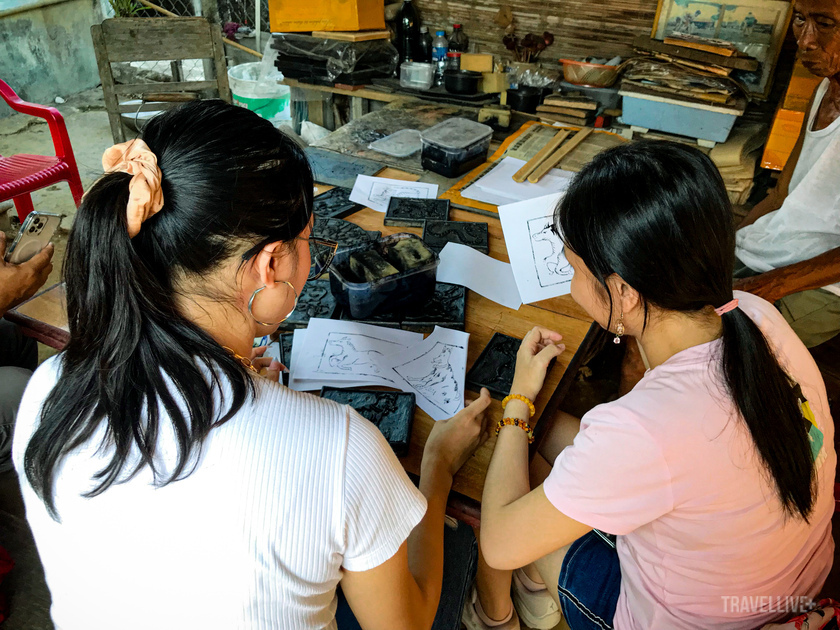
Tourists practice making paintings in Sinh village
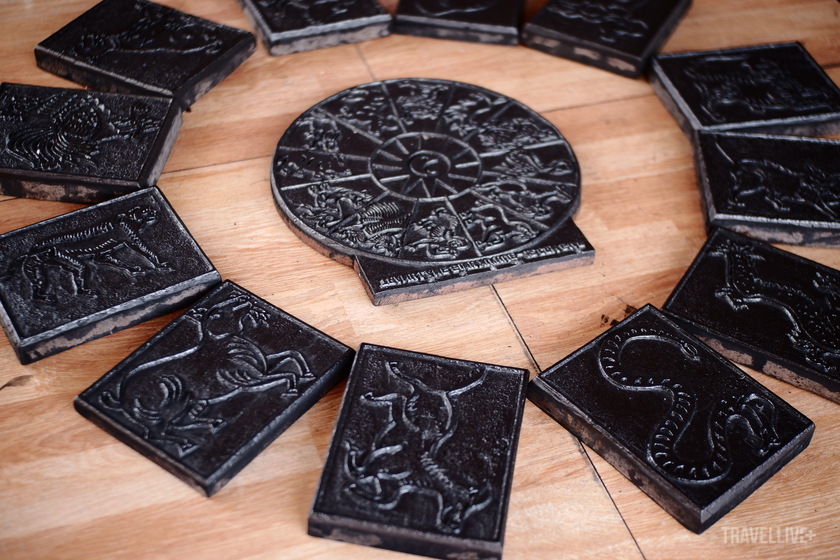
The Mud Paintings
The steps of making Sinh village paintings include preparing the printing paper, printing lines and coating colors. When cutting the paper, the craftsman uses a bamboo knife to naturally fray the edges of the paper. When printing the paintings, the artisans add 2-3 layers of pearl powder to the paper, creating a paper that is both hard and porous and has sparkling colors.
Sinh village paintings only have one printed version, because the basic part of Sinh paintings is black printing on plain paper, the lines are thin and thick depending on the object depicted. When printing large paintings, the artisan usually fixes the engravings, applies glue to the printing board surface, then covers the paper with the glue on top and uses a loofah to rub the back of the paper evenly before peeling it off. I only practice making a small painting, so I just need to fix the paper on a flat surface, then cover the board with the black and press it evenly onto the paper.
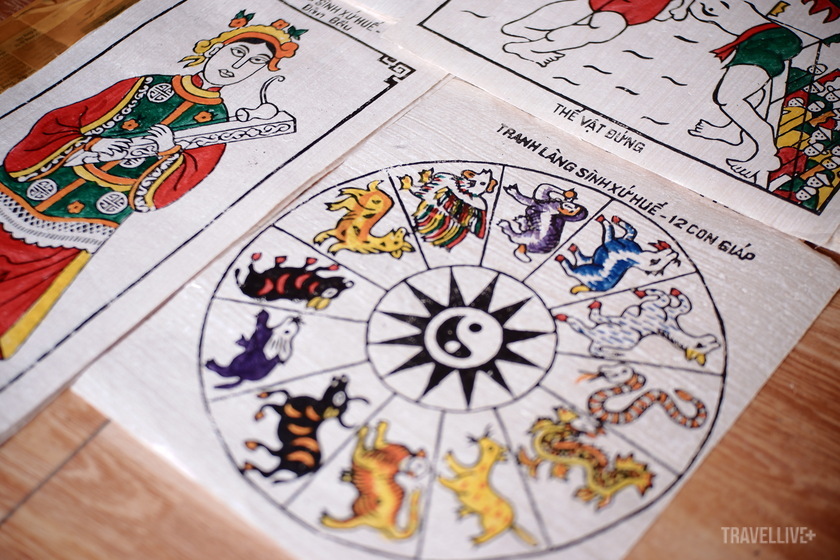
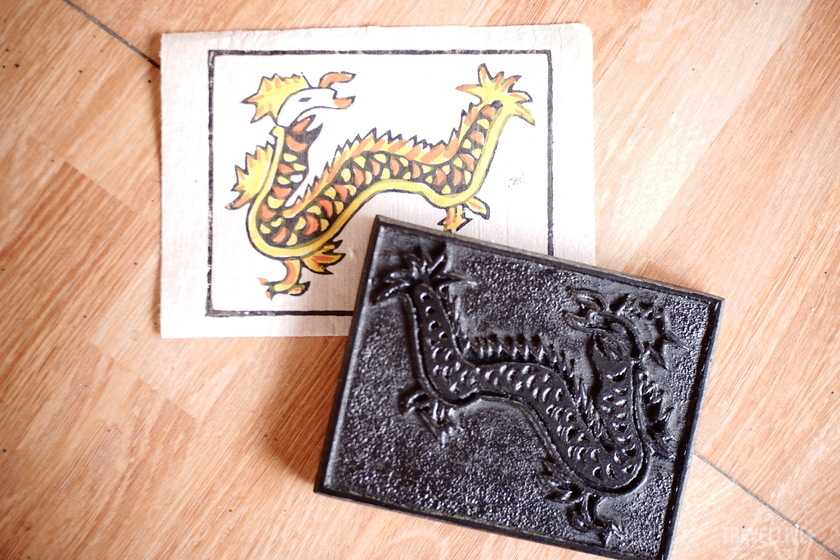
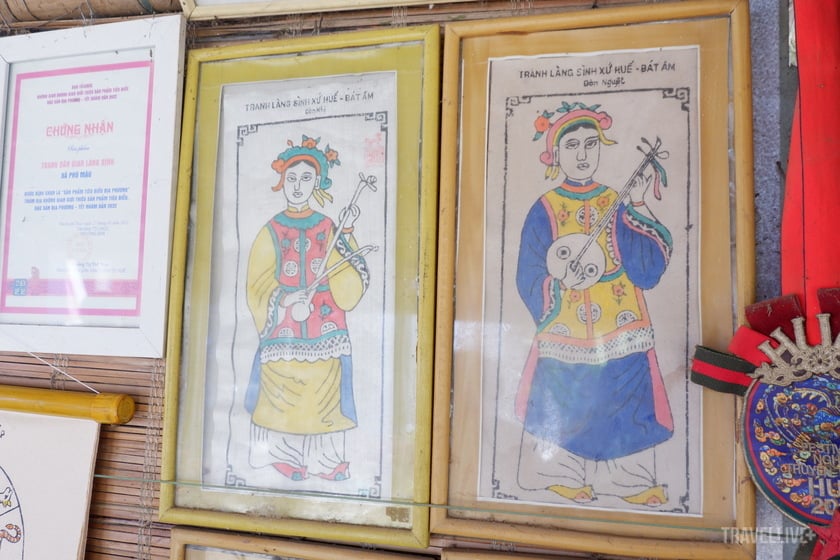

Colorful paintings of Sinh village
After the prints were dry, I was instructed to color them. The colors on Sinh paintings are not random because of religious principles, but there is still room for creative flexibility. Therefore, the paintings are not exactly the same even though they are printed on the same woodblock.
Nowadays, many steps have been simplified and influenced by modern painting methods. Chemicals and dyes are gradually replacing colors prepared from nature due to the shortage of natural materials and price competition.
During its heyday, Sinh village paintings were also arranged in boats and transported to sell everywhere such as Sam market, Dong Ba market, Mai market, Sai market, Song market, Can market, Phien market (Quang Tri), Treo market (Quang Binh)...
Nowadays, folk painting is not as popular as before, but on the days before Tet, when I set foot in Sinh village, I can still feel the unique, distinct and beautiful folk culture.
